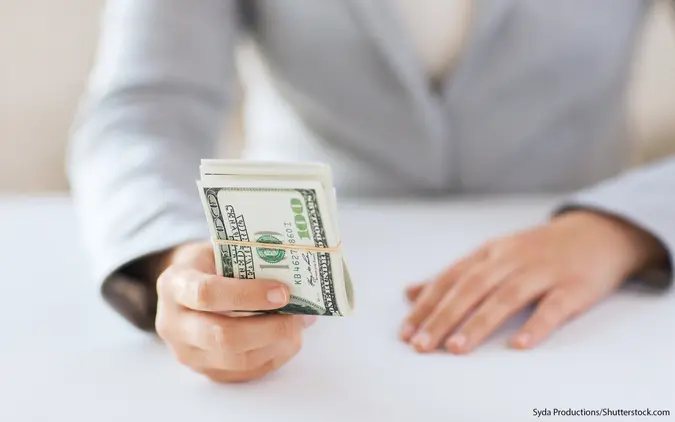10 Commemorative Coins Worth Over $100 — How To Gauge Their Value

Commitment to Our Readers
GOBankingRates' editorial team is committed to bringing you unbiased reviews and information. We use data-driven methodologies to evaluate financial products and services - our reviews and ratings are not influenced by advertisers. You can read more about our editorial guidelines and our products and services review methodology.

20 Years
Helping You Live Richer

Reviewed
by Experts

Trusted by
Millions of Readers
The U.S. Mint exists to produce money, but it also makes money by creating bullion coins for investors and numismatic coins for collectors. Among the latter group are commemorative coins that are legal tender but not intended for general circulation.
Commemorative coins date as far back as the 1890s and were produced over the next several decades. Some of the older coins can sell for thousands of dollars on the collector’s market. But most consumers will come across commemorative coins in the modern series, which began in 1982.
As the U.S. Mint noted on its website, these coins not only commemorate important aspects of American history and culture, but also help raise money for important causes. Each coin carries a surcharge that goes to organizations and projects that benefit the community. For example, surcharges on the U.S. Capitol Visitor Center commemorative coins helped build a new visitor center under the U.S. Capitol’s East Plaza, according to the Mint.
Since the modern commemorative coin program began in 1982, the Mint has raised more than $506,000 in surcharges to help build new museums, maintain national monuments such as the Vietnam War Memorial, preserve historical sites and support various Olympic programs. You can buy commemorative coins in the online catalog.
Among the commemorative coins produced this decade are the Harriet Tubman Bicentennial coin, National Purple Heart Hall of Honor coin, Christa McAuliffe Silver Dollar and Basketball Hall of Fame coin.
As mentioned earlier, you can spend commemorative coins like any other currency, but you are better off saving them. These coins gain value over time because they are only minted once, according to the American Rarities site. Most of the modern commemoratives are valued in accordance with the silver and gold in them, Coin Appraiser reported, which is typically much more than face value.
But some varieties are worth much more than that due to their low availability and high demand. Many of the most valuable commemorative coins were silver dollars produced in 1996 to mark the 100th anniversary of the modern Olympic games, according to The Spruce Crafts.
Here’s a look at 10 modern silver dollar commemorative coins worth $100 or more on the buyer’s market, in chronological order (all prices provided by The Spruce Crafts):
- 1995-D Cent. Olympics — Cycling: $135
- 1996-D Cent. Olympics — Tennis: $245
- 1996-D Cent. Olympics — Paralympics: $290
- 1996-D Cent. Olympics — Rowing: $290
- 1996-D Cent. Olympics — High Jump: $300
- 1996-S National Community Service: $130
- 1996-D Smithsonian 150th Anniversary: $110
- 1997-P National Law Officers Memorial: $140
- 1998-S Black Revolutionary War Patriots: $100
- 2001-D American Buffalo: $210
 Written by
Written by  Edited by
Edited by 

























